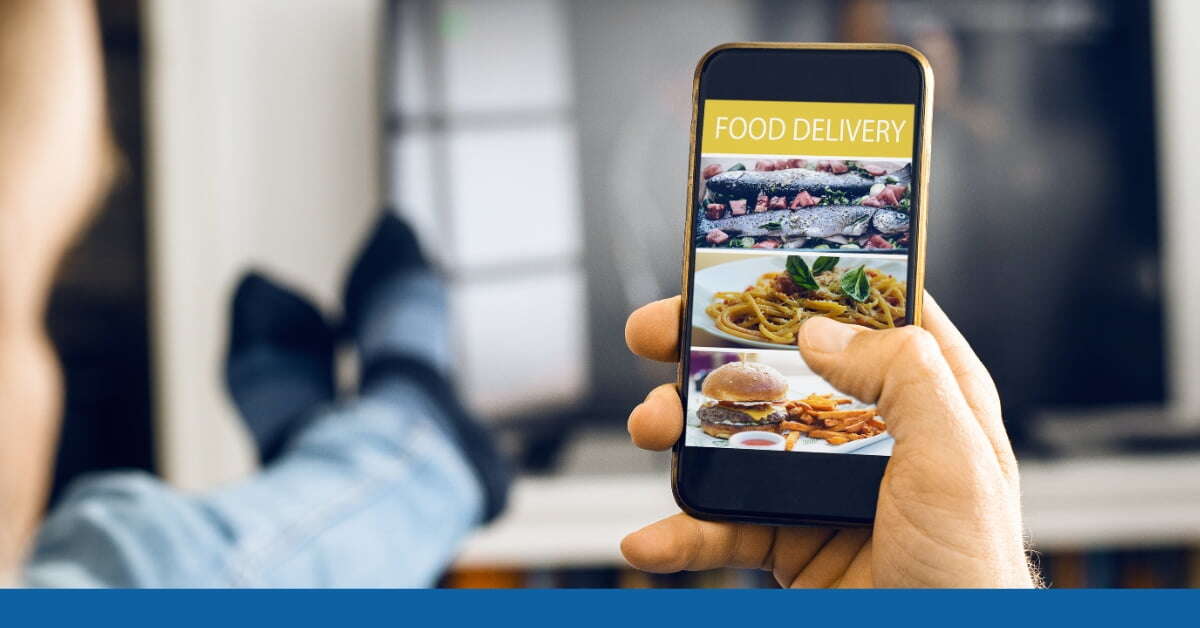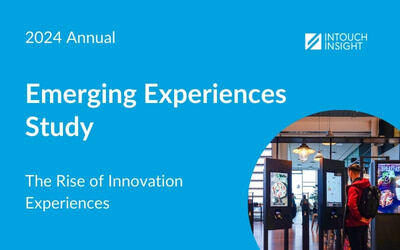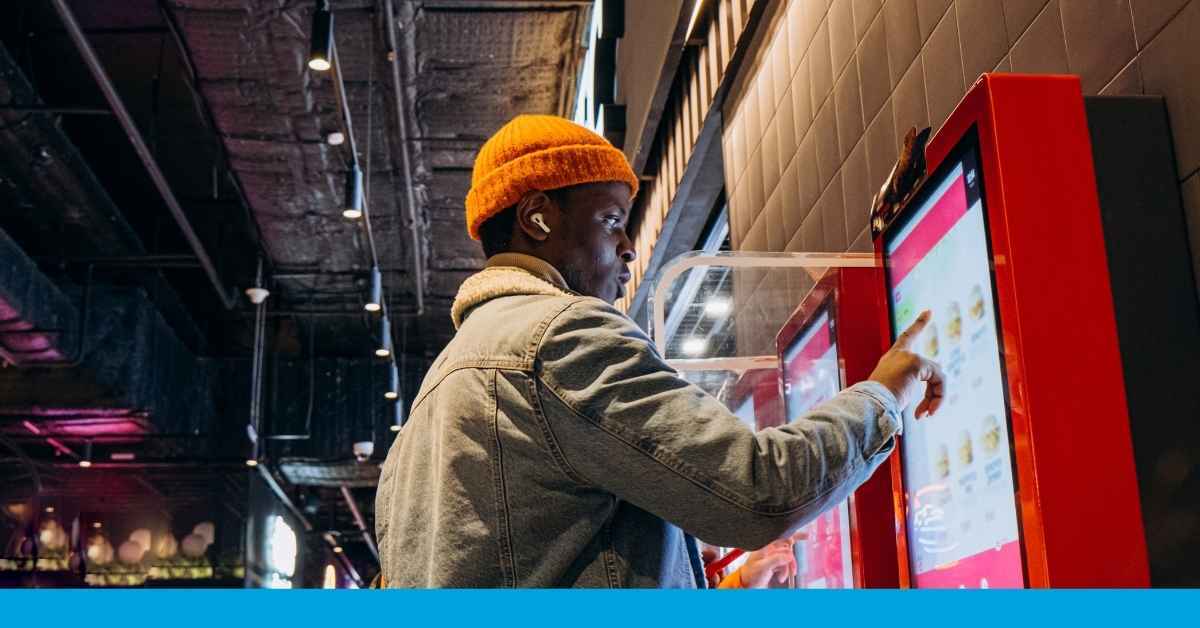Restaurant Trends: A Dive Into Emerging Experiences 2024
The Quick-Service Restaurant (QSR) industry is constantly evolving. Among all the trends influencing how restaurants operate, digital ordering cannot...
3 min read
Sarah Beckett July 30, 2024

The quick-serve restaurant (QSR) industry is changing fast as ‘phygital' —where physical and digital customer experiences blend—becomes the norm. This shift is driven by tech-savvy consumers who want convenience, speed, and better experiences.
In this blog, we dive into our QSR Consumer Perceptions Survey to see how customers view digital CX and what opportunities brands have.
Key Takeaways
Hint: Want to see more insights from the QSR Consumer Perceptions Survey? Read our QSR Guest Experiences: Insight Into Tech’s Impact blog.
When we asked people about the technology they’ve used in restaurants, self-serve kiosks (58%), tablet payments (47%), and tablets at tables (37%) were the top choices.

Self-serve kiosks are popular because they make ordering easier. Customers can look at the menu, customize their orders, and pay without waiting in line.
They also reduce wait times and increase order accuracy, improving overall operational efficiency. Plus, kiosks can show promotions and suggest extra items, increasing the total spend.
Our latest Emerging Experience Study showed that the order accuracy rate was 97%, which is 5% higher when compared to orders placed at the counter.
Tablet payments also improve the experience by offering a quick and secure way to pay. Tablets can integrate with loyalty programs, making it easier for customers to join and earn rewards.
This technology speeds up payment and reduces errors compared to cash transactions, enhancing overall accuracy.
Drive-thru remains the most popular way to order (41%), followed by in-store cashier orders (26%) and digital orders through restaurant apps (15%).

People love the drive-thru for its convenience and speed, especially when they are on the go.
Restaurants are also upgrading drive-thrus with new tech, like mobile ordering for pick-up and digital menu boards, to make the experience even better.
Looking at the data by age, it’s clear that customers aged 25-34 really enjoy digital ordering. In fact, 50% of them prefer using digital tools over traditional methods (considering all digital touchpoints).
This shows that young adults are quick to adopt new technologies for convenience. Their strong preference for digital ordering highlights the need for quick-serve restaurants to focus on digital customer experience to meet the expectations of this tech-savvy group.

Digital menu boards make ordering much easier and more enjoyable. According to survey data:
With their clear visuals and organized layouts, digital boards make it simple for customers to see their options, ingredients, and customization choices.
Interactive elements can even keep customers entertained while they wait, making the overall guest experience more enjoyable.
For businesses, digital boards streamline the ordering process by giving customers all the information they need at a glance. This speeds up service and reduces wait times.
Digital menu boards can also show dynamic content like rotating promotions, new menu items, and special offers. This flexibility lets restaurants quickly update menus to reflect price changes, different times of day, seasonal items, and limited-time offers, ensuring guests always see the latest information.
Customer feelings about digital tipping prompts are mixed:
Digital tipping prompts are becoming more common in quick-serve restaurants, making it easy for customers to add a tip to their bill. Studies show these prompts can lead to more frequent tipping and higher average tip amounts.
While this technology aims to enhance the tipping process, customer reactions are mixed, highlighting the need for a balanced approach.
However, reactions are varied, so it’s important to design these prompts carefully. They should be noticeable but not intrusive, offering clear choices without making customers feel pressured.
Several QSRs have successfully embraced digital customer experiences:
Shake Shack has been at the forefront of digital innovation in the QSR industry, successfully integrating various technologies to enhance the digital customer experience and streamline operations.
By the end of 2023, self-service kiosks made up 50% of in-store sales, and total digital sales (including kiosks, web, app, and delivery) accounted for 80% of overall sales. (Source: QSR Magazine)
Taco Bell is making big strides in improving how customers interact with their brand online. A standout effort is their Go Mobile prototype, which aims for 100% digital sales by using smart technology to make ordering easier and more enjoyable. (Source: Food Business News)
These Go Mobile locations focus on digital orders and drive-thru experiences. Customers can order ahead via the mobile app, making the process faster and hassle-free.
Chipotle's Chipotlane Digital Kitchen prototype is reshaping fast-casual dining by handling only digital orders, eliminating the traditional dining area, and focusing on a streamlined digital customer journey.
Customers and delivery drivers can pick up orders through a Chipotlane drive-thru or walk-up window, making the process quick and convenient. (Source: Chipotle)
For quick-serve restaurants looking to stay ahead, investing in digital customer experiences is a must. These technologies can boost efficiency, improve order accuracy, and meet the growing demand for smooth, tech-enabled interactions.
Examples like Shake Shack’s self-service kiosks, Taco Bell’s Go Mobile prototype, and Chipotle’s Chipotlane Digital Kitchen show how effective digital strategies can be in satisfying tech-savvy customers.
Want to learn more about enhancing customer experiences in the QSR industry?
Dive into our Customer Experience (CX) guide to learn how to gather data-driven insights from every key interaction, whether in-store or through digital channels.

The Quick-Service Restaurant (QSR) industry is constantly evolving. Among all the trends influencing how restaurants operate, digital ordering cannot...
![QSR Guest Experiences: Insight Into Tech’s Impact [Latest Data]](https://www.intouchinsight.com/hubfs/website/intouch-insight/blog/qsr-guest-experiences.jpg)
When it comes to quick-serve restaurants (QSR), one thing is clear: customers crave speed, convenience, and good food. But with an overwhelming...

The restaurant industry is evolving at an unprecedented pace. Brands are introducing customer-facing technology, new menu items, limited-time offers,...